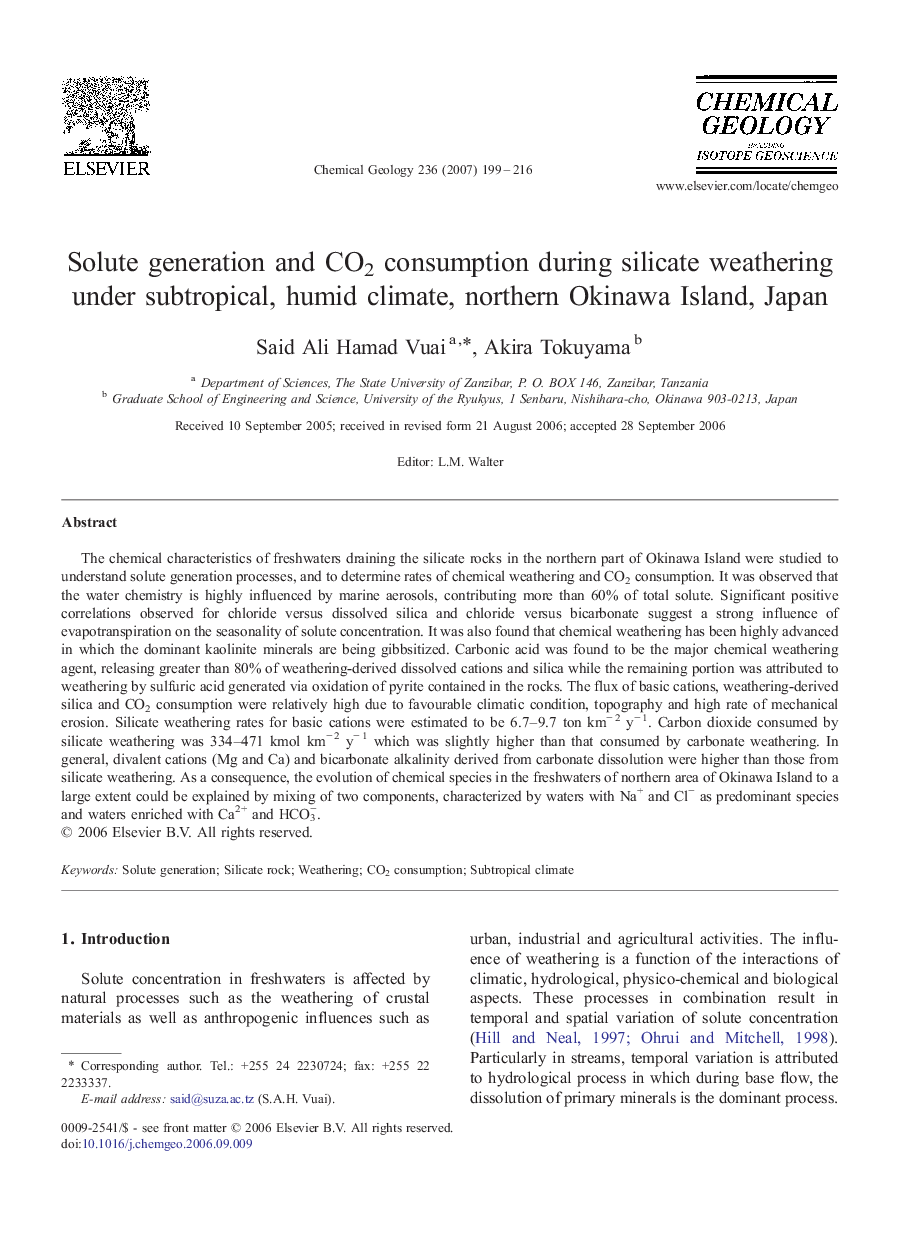| Article ID | Journal | Published Year | Pages | File Type |
|---|---|---|---|---|
| 4701160 | Chemical Geology | 2007 | 18 Pages |
The chemical characteristics of freshwaters draining the silicate rocks in the northern part of Okinawa Island were studied to understand solute generation processes, and to determine rates of chemical weathering and CO2 consumption. It was observed that the water chemistry is highly influenced by marine aerosols, contributing more than 60% of total solute. Significant positive correlations observed for chloride versus dissolved silica and chloride versus bicarbonate suggest a strong influence of evapotranspiration on the seasonality of solute concentration. It was also found that chemical weathering has been highly advanced in which the dominant kaolinite minerals are being gibbsitized. Carbonic acid was found to be the major chemical weathering agent, releasing greater than 80% of weathering-derived dissolved cations and silica while the remaining portion was attributed to weathering by sulfuric acid generated via oxidation of pyrite contained in the rocks. The flux of basic cations, weathering-derived silica and CO2 consumption were relatively high due to favourable climatic condition, topography and high rate of mechanical erosion. Silicate weathering rates for basic cations were estimated to be 6.7–9.7 ton km− 2 y− 1. Carbon dioxide consumed by silicate weathering was 334–471 kmol km− 2 y− 1 which was slightly higher than that consumed by carbonate weathering. In general, divalent cations (Mg and Ca) and bicarbonate alkalinity derived from carbonate dissolution were higher than those from silicate weathering. As a consequence, the evolution of chemical species in the freshwaters of northern area of Okinawa Island to a large extent could be explained by mixing of two components, characterized by waters with Na+ and Cl− as predominant species and waters enriched with Ca2+ and HCO3−.
